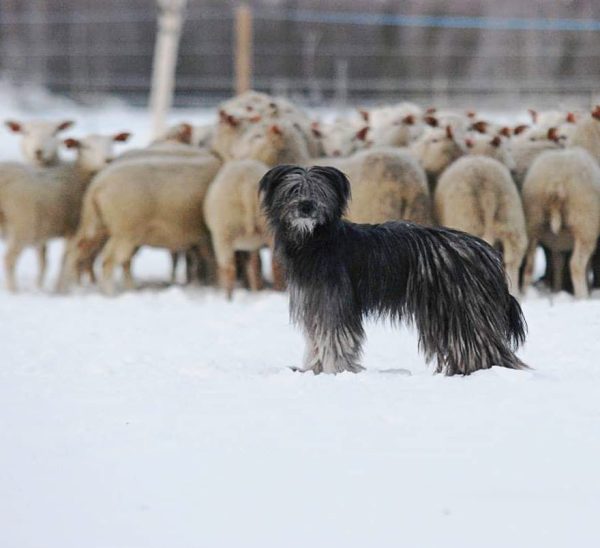
There are several breeds in the world which have coats that can “mat” into slender sections. In the Puli (our breed) as well as the Komondor, Poodle, and Havanese, these are called “cords.” Not so with the Bergamasco in which the coat is “flocked.”
A rough faced Pyrenean Shepherd with a long coat may also have hair that can cord, especially on the dog’s elbows, croup and thighs. While the AKC standard makes no mention of terms given to these cords, the FCI standard does.
In some Pyr Sheps, a mixture of coarse and wooly hair typically produces strands or cords are called “cadenettes.” They form naturally on the hind and front legs, in-between the front legs, and the rump. There is also matted hair that feels more like felt, and these are called “matelotes” which can overlap each other like shingles on a roof.
The Pyrenean Shepherd is a working dog that is usually on the move. It is to the dog’s advantage to have a coat that can provide a bit of protection, but also remain loose enough so as to not to impede the dog’s agility.
Some dogs begin to form their cords early on, but we’ve also seen photographs of dogs that didn’t start their cadenettes until they were a few years old. As in other corded breeds, the shape of the cords may also vary, and range from thin and round to wide and flat, and like other corded breeds, the cords will continue to grow and may require trimming. Fanciers must be aware, however, that show dogs may be denied a ribbon if a dog’s coat appears to have been scissored, especially on the face, except for tidying the feet.
A corded Pyrenean Shepherd presents quite a sight when it trots away as his or her cords may swish and sway as if the dog is wearing a hoola skirt!
Image: Pyrenean Shepherd Dog, “Berger d’Arbazile Saut de Hurler Louve” appears with the kind permission of owner, Tanja Ahola. This photo may not be borrowed, reprinted, or used in any way without the consent of Tanja Ahola.
